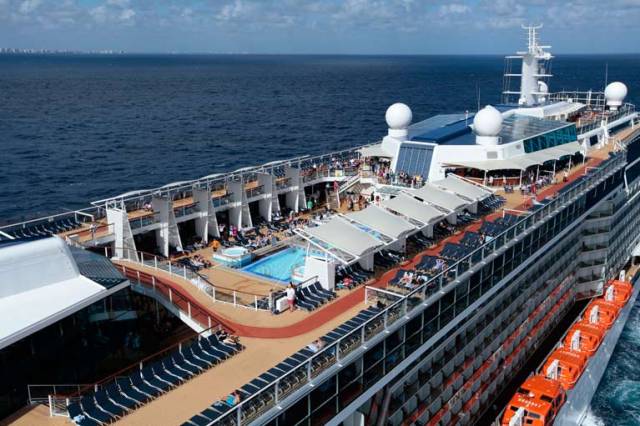2019 is set to be an exciting year in the Irish cruise calendar as Celebrity Cruises confirms that Dublin Port will become a regular fixture. With five turnarounds in the port, Celebrity Refection will call Dublin home from May to June 2019.
In 2018 Celebrity Cruises becomes the first major cruise line to homeport a ship in the city when Celebrity Eclipse arrives in Dublin in April 2018, offering a mini season of five sailings. Due to the success of this inaugural season, Celebrity Cruises is continuing to feature Dublin as one of its prestigious homeports in 2019 and bringing a newer ship to Ireland. In 2019 over 15,000 holidaymakers will start their cruise holiday in Dublin with CelebrityCruises.
Celebrity Cruises will base the 3,030-guest Celebrity Reflection in Dublin in early summer 2019 offering a series of eight, 10, 11 and 12 night sailings. Cruises will sail to Iceland, destinations throughout Ireland, in the Norwegian Fjords and around the British Isles.
Celebrity Reflection launched in 2012 and is currently the newest ship in the Celebrity Cruises fleet. Featuring a real grass lawn on the top deck with private cabanas and the luxurious Reflection Suite – a one-of-a-kind two bedroomed suite with a shower cantilevered out above the ocean, and private butler service – Celebrity Reflection is one of the most stylish ships at sea.
The exciting expansion of Celebrity Cruises’ Ireland programme follows strong guest demand for cruises from Dublin, and the support of the Irish travel industry including travel agents and Dublin Port.
Lorraine Quinn, head of sales, Ireland, Celebrity Cruises, explains: “Sailings starting in Ireland from Dublin Port have been popular with our guests from all over the world. We are really pleased with the performance of the 2018 season for Celebrity Eclipse, and our 2019 deployment of a slightly larger ship in Celebrity Reflection to Dublin sees an increase in the number of people who will sail from this great city. Confirming our ongoing commitment to Ireland is a huge thank you to those who have aided Celebrity Cruises in becoming the first major cruise line to base a cruise ship in Dublin. I can’t wait to be part of the huge welcome that our guests will receive in 2018, 2019 and beyond.”
Pat Ward, Head of Corporate Services, Dublin Port Company adds: “We are delighted that Celebrity Cruises has chosen Dublin as the homeport for the deluxe Celebrity Reflection during 2019 confirming Dublin City as a marquee destination for the world’s largest cruise lines. Celebrity Reflection, measuring 319m long and boasting 14 decks, will be one of the most impressive cruise ships to arrive into Dublin Port. Our location at the heart of the city means that guests can maximise their time in the capital, relaxing in one of our many fine hotels while taking in the city’s sights, shops and attractions with ease. Dublin Port’s cruise business is growing from strength to strength. We are already on track for a record year in 2018, and with work on our Alexandra Basin Redevelopment Project having commenced, the future of cruise tourism to the capital is now secure.”
Both Celebrity Eclipse and Celebrity Reflection are part of Celebrity Cruises’ newest Solstice Class of ships, all introduced between 2008 and 2012. In addition to luxury guest accommodations, designer boutiques, extensive bars and restaurants, they also feature a real grass lawn on the top deck. With many awards particularly for its food and wine, Celebrity Cruises boasts the largest and rarest collection of wine at and sea and host of exclusive restaurants on-board all overseen by a Michelin-starred executive chef.
Celebrity Cruises continues to grow and expand its fleet with a new class of ship currently under construction. The first of those ships – Celebrity Edge – will enter service in December 2018.































































